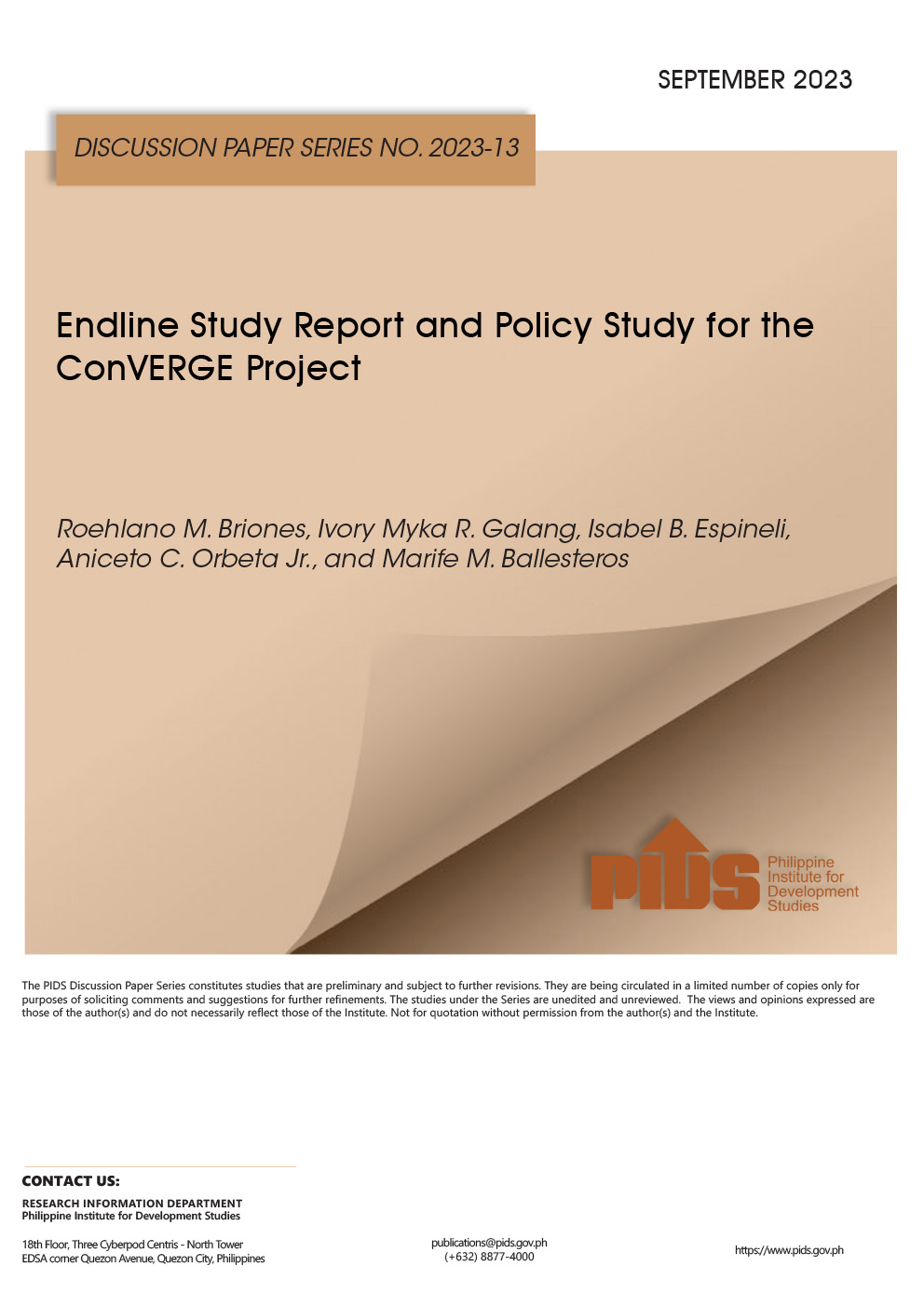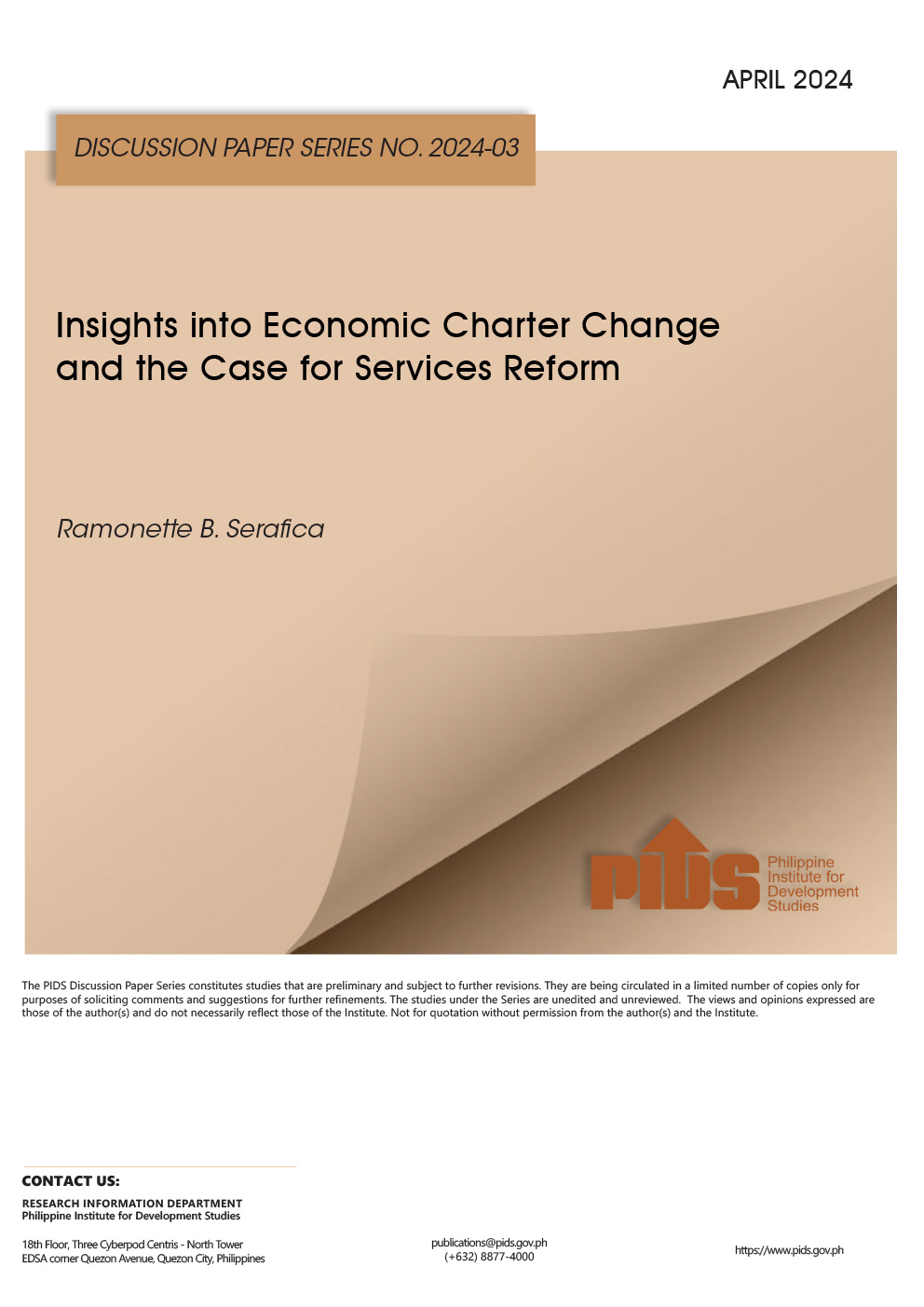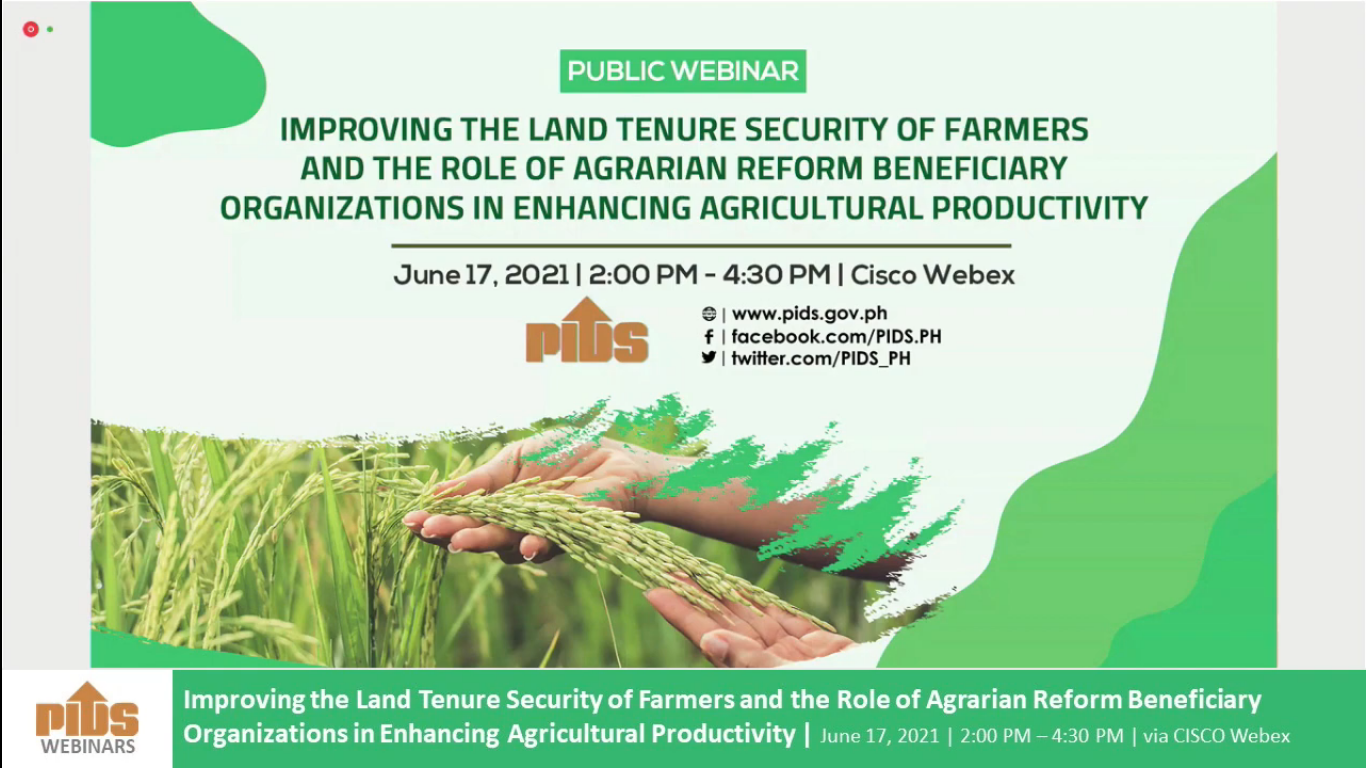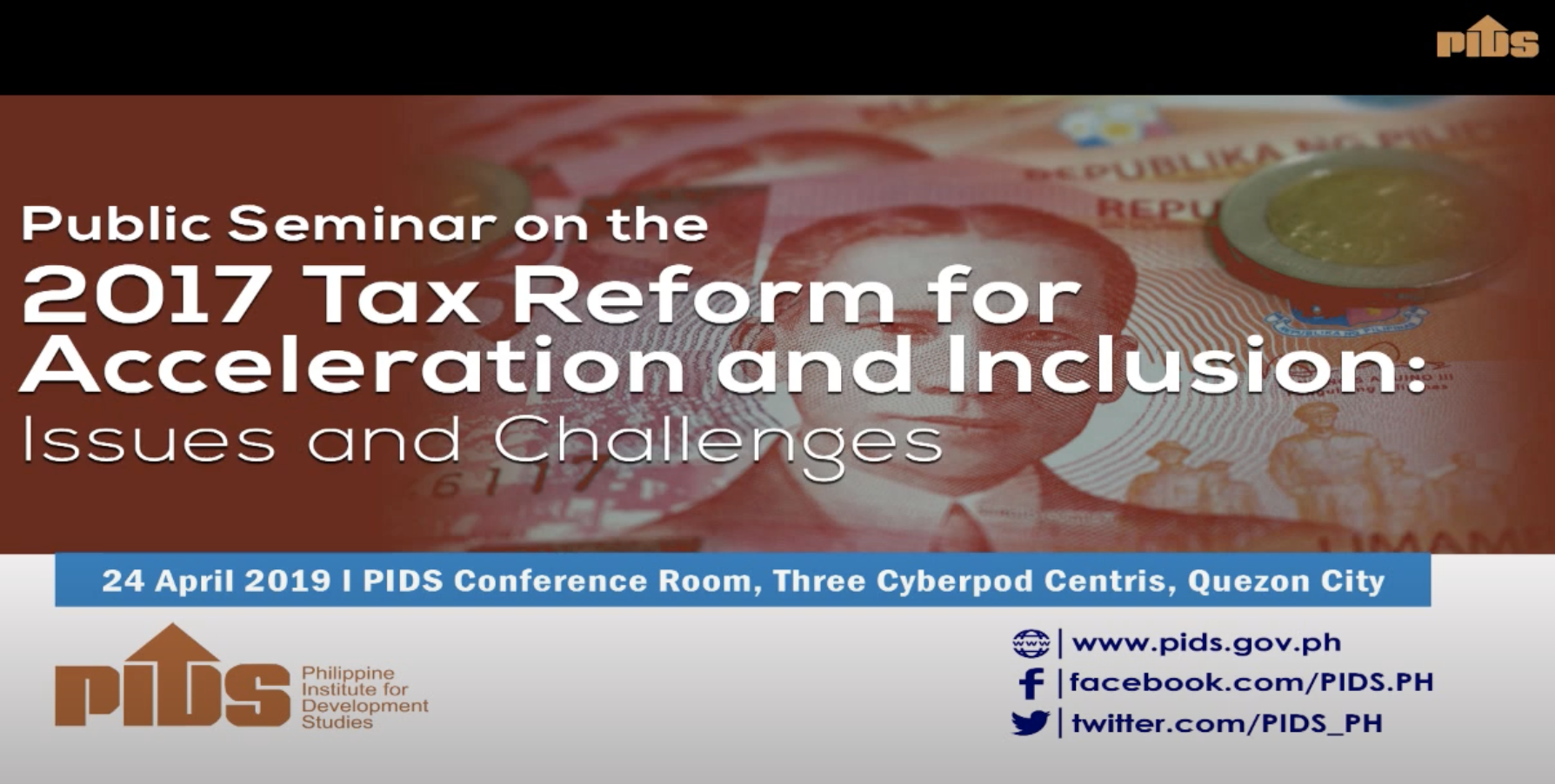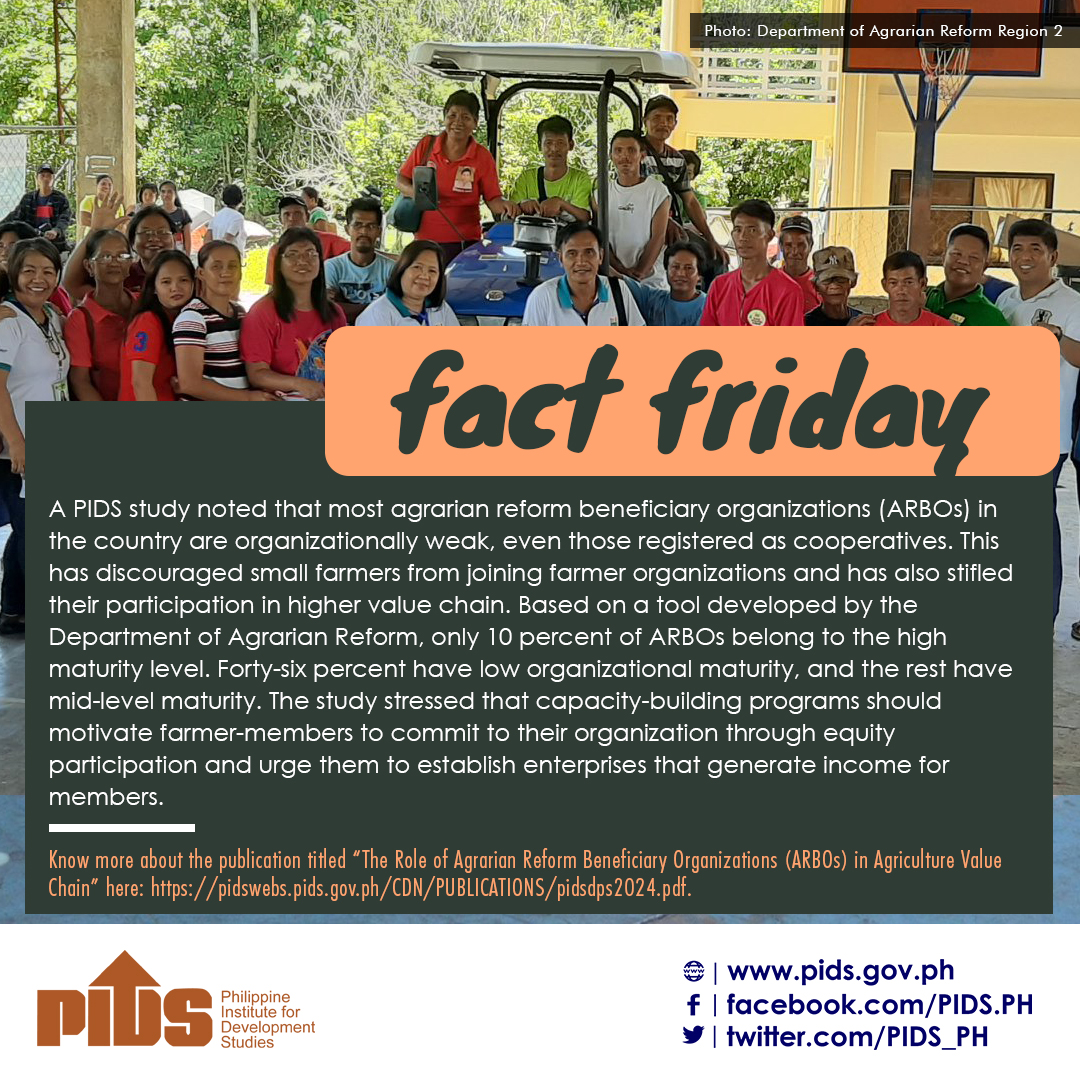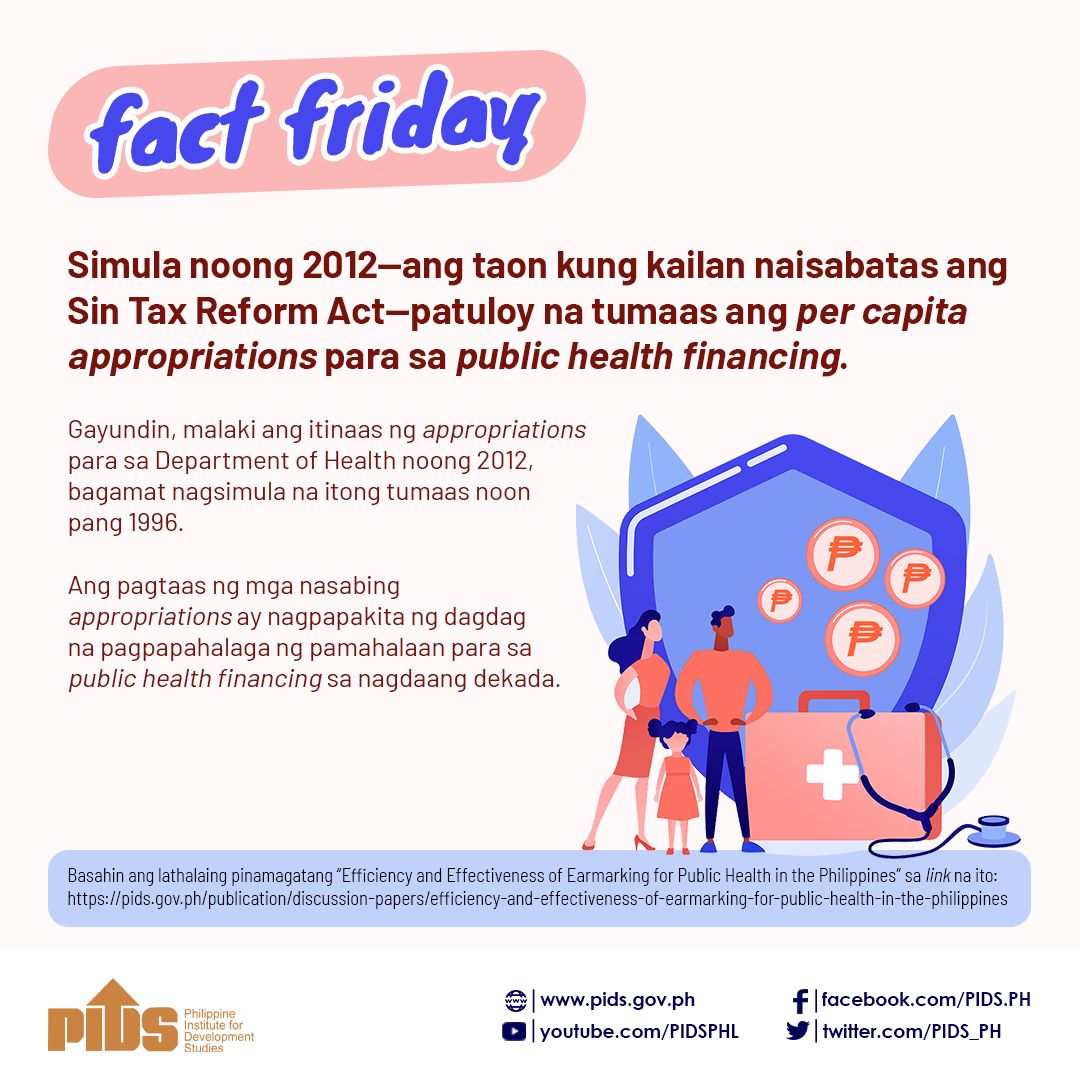
Nearly three decades after the Comprehensive Agrarian Reform Program (CARP) was signed into law, land reform has yet to be completed in the Philippines. Data from the Department of Agrarian Reform website show that as of the end of 2013, the government has acquired and distributed 6.9 million hectares of land, or 88 percent of the total land subject to agrarian reform.
After three deadline extensions, there are again clamors to extend the Comprehensive Agrarian Reform Program Extension with Reforms (CARPER) for another two years after June 30, 2016. This is not the first time that agrarian reform deadlines have not been met. CARPER is an extension of an extension of the agrarian reform program.
The protracted period of implementation and the pending completion of the CARP have resulted in underinvestments in the agriculture sector. Landowners are hesitant to invest while their farms are under acquisition processing. The CARP has also failed to break up large estates. A highly politicized program protected by interest groups with ties to the country’s political elite, many influential landowners have managed to evade the CARP. According to a study by Marife Ballesteros, a PIDS senior research fellow, various schemes are employed by landowners, such as increasing retained areas by registering excess holdings in the name of family members or dummies, mortgaging land to defer land reform, converting land to non-agricultural use, and giving farmers the option to own shares of stock instead of land, a method used by the owners of Hacienda Luisita.*
Once small farmers have the land, the next issue they have to confront is how to finance crop production. The wealth bias of the rural credit market is a major constraint to them. As a result, many farmers resort to selling their land or pawning their emancipation patents and certificates of land ownership awards.
Providing secure property rights to farm workers to foster greater productivity and to enable them to capture the benefits of agriculture is a fundamental objective of the CARP. More than two million beneficiaries benefited from the land transfer program; 84 percent of them acquired individual ownership rights that gave them full control over land operation and management. In another study, Ballesteros stressed the critical role of land administration and management for the successful implementation of the CARP. She revealed that this aspect is fraught with weak land policy and poor land administration issues that resulted in deficient land records, lack of information sharing among government land agencies, tedious land titling and registration process, and unclear land policies. All of these, in addition to the legal maneuvering of influential landowners, have caused the lengthy implementation of the CARP, the flawed land redistribution and land retention, and the incomplete transfer of property rights.
Secure property rights are a necessary condition to reduce poverty in the Philippines, which is largely dominant in agricultural areas. The completion of the CARP, resolution of agrarian reform issues, and provision of adequate support services to farmers, including physical infrastructure, will facilitate the rehabilitation of the agricultural sector and help fulfill the path to inclusive growth.
You may access PIDS studies on agrarian reform from the SocioEconomic Research Portal for the Philippines. Simply type ‘agrarian reform’, ‘CARP’, ‘poverty, agriculture, land management,’ ‘property rights’, and other relevant keywords in the Search box.
CARP Institutional Assessment in a Post-2008 Transition Scenario: Implications for Land Administration and Management
Land Rental Market Activity in Agrarian Reform Areas: Evidence from the Philippines
The Cost of Redistributive Land Reform in the Philippines: Assessment of PD 27 and RA 6657 (CARL)
Poverty and Agriculture in the Philippines: Trends in Income Poverty and Distribution
Regional Integration, Inclusive Growth, and Poverty: Enhancing Employment Opportunities for the Poor
Targeting the Agricultural Poor: The Case of PCIC's Special Programs
Post-2008 CARP: Extension with critical reforms
Property Rights in Land Reform Areas
Has Land Reform Improved on Landownership Inequality? Evidence from Philippine Rice Growing Villages
*In 2005, the previous administration through the Presidential Agrarian Reform Council (PARC) revoked the stock distribution option (SDO). What followed was a lengthy court battle after the owners of Hacienda Luisita challenged the PARC’s decision. In 2010, the Supreme Court came out with a decision that upheld the option of each beneficiary to choose either land or shares; this was again disputed by the landowners. Finally, in 2012, the Supreme Court upheld with finality the 2005 decision of the PARC to revoke the SDO. A total of 4,915 hectares of the estate were ordered by the Supreme Court to be distributed to 6,296 farm workers of the hacienda. (Sources: Cruz, Elfren. 2013. Hacienta Luisita and agrarian reform. The Philippine Star, 3 October 2013; Department of Agrarian Reform website, Awarding of Hacienda Luisita farm lots almost complete, http://www.dar.gov.ph/dar-in-the-news/739-awarding-of-hacienda-luisita-farm-lots-almost-completed-read-more-http-newsinfo-inquirer-net-604875-awarding-of-hacienda-luisita-farm-lots-almost-completed).
After three deadline extensions, there are again clamors to extend the Comprehensive Agrarian Reform Program Extension with Reforms (CARPER) for another two years after June 30, 2016. This is not the first time that agrarian reform deadlines have not been met. CARPER is an extension of an extension of the agrarian reform program.
The protracted period of implementation and the pending completion of the CARP have resulted in underinvestments in the agriculture sector. Landowners are hesitant to invest while their farms are under acquisition processing. The CARP has also failed to break up large estates. A highly politicized program protected by interest groups with ties to the country’s political elite, many influential landowners have managed to evade the CARP. According to a study by Marife Ballesteros, a PIDS senior research fellow, various schemes are employed by landowners, such as increasing retained areas by registering excess holdings in the name of family members or dummies, mortgaging land to defer land reform, converting land to non-agricultural use, and giving farmers the option to own shares of stock instead of land, a method used by the owners of Hacienda Luisita.*
Once small farmers have the land, the next issue they have to confront is how to finance crop production. The wealth bias of the rural credit market is a major constraint to them. As a result, many farmers resort to selling their land or pawning their emancipation patents and certificates of land ownership awards.
Providing secure property rights to farm workers to foster greater productivity and to enable them to capture the benefits of agriculture is a fundamental objective of the CARP. More than two million beneficiaries benefited from the land transfer program; 84 percent of them acquired individual ownership rights that gave them full control over land operation and management. In another study, Ballesteros stressed the critical role of land administration and management for the successful implementation of the CARP. She revealed that this aspect is fraught with weak land policy and poor land administration issues that resulted in deficient land records, lack of information sharing among government land agencies, tedious land titling and registration process, and unclear land policies. All of these, in addition to the legal maneuvering of influential landowners, have caused the lengthy implementation of the CARP, the flawed land redistribution and land retention, and the incomplete transfer of property rights.
Secure property rights are a necessary condition to reduce poverty in the Philippines, which is largely dominant in agricultural areas. The completion of the CARP, resolution of agrarian reform issues, and provision of adequate support services to farmers, including physical infrastructure, will facilitate the rehabilitation of the agricultural sector and help fulfill the path to inclusive growth.
You may access PIDS studies on agrarian reform from the SocioEconomic Research Portal for the Philippines. Simply type ‘agrarian reform’, ‘CARP’, ‘poverty, agriculture, land management,’ ‘property rights’, and other relevant keywords in the Search box.
CARP Institutional Assessment in a Post-2008 Transition Scenario: Implications for Land Administration and Management
Land Rental Market Activity in Agrarian Reform Areas: Evidence from the Philippines
The Cost of Redistributive Land Reform in the Philippines: Assessment of PD 27 and RA 6657 (CARL)
Poverty and Agriculture in the Philippines: Trends in Income Poverty and Distribution
Regional Integration, Inclusive Growth, and Poverty: Enhancing Employment Opportunities for the Poor
Targeting the Agricultural Poor: The Case of PCIC's Special Programs
Post-2008 CARP: Extension with critical reforms
Property Rights in Land Reform Areas
Has Land Reform Improved on Landownership Inequality? Evidence from Philippine Rice Growing Villages
*In 2005, the previous administration through the Presidential Agrarian Reform Council (PARC) revoked the stock distribution option (SDO). What followed was a lengthy court battle after the owners of Hacienda Luisita challenged the PARC’s decision. In 2010, the Supreme Court came out with a decision that upheld the option of each beneficiary to choose either land or shares; this was again disputed by the landowners. Finally, in 2012, the Supreme Court upheld with finality the 2005 decision of the PARC to revoke the SDO. A total of 4,915 hectares of the estate were ordered by the Supreme Court to be distributed to 6,296 farm workers of the hacienda. (Sources: Cruz, Elfren. 2013. Hacienta Luisita and agrarian reform. The Philippine Star, 3 October 2013; Department of Agrarian Reform website, Awarding of Hacienda Luisita farm lots almost complete, http://www.dar.gov.ph/dar-in-the-news/739-awarding-of-hacienda-luisita-farm-lots-almost-completed-read-more-http-newsinfo-inquirer-net-604875-awarding-of-hacienda-luisita-farm-lots-almost-completed).

